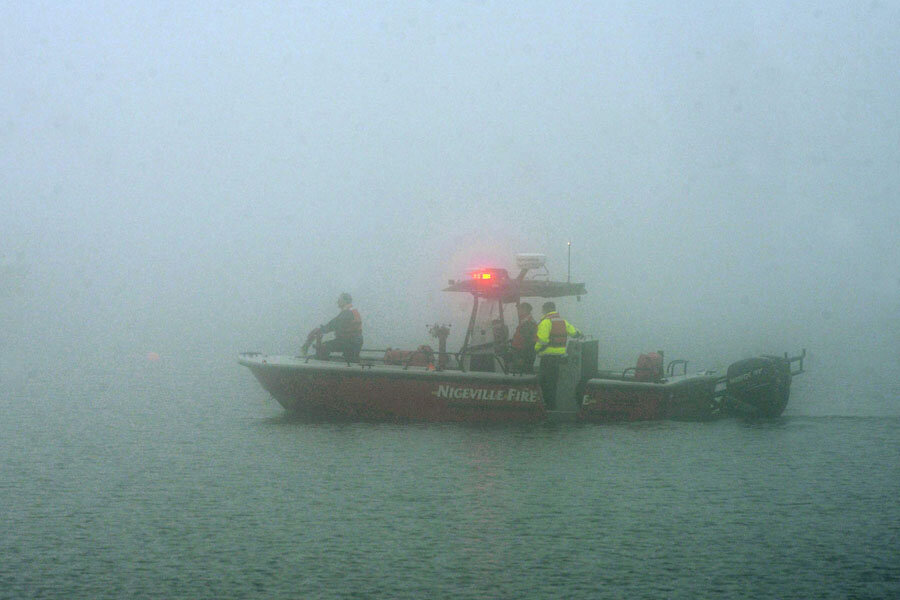Military helicopter crash victims found in the fog and rain
Loading...
| Navarre, Fla.
Military officials say they have found the main site where a helicopter crashed during a training mission off the Florida coast, killing seven Marines and four soldiers.
Col. Monte Cannon said Thursday that officials are not hopeful any survivors will be found. He says the mission has transitioned from search and rescue to recovery.
Cannon says the military is not yet releasing the names of those killed or any details about them.
Heavy fog, rain and rough surf was complicating efforts to recover the remains of those killed. The military has provided few details about the crash, which happened Tuesday night in fog so thick that another helicopter turned back.
More heavy fog, rain and rough surf complicated Thursday's efforts to collect the remains of seven Marines and four soldiers whose Black Hawk .
The same fog and crashing Gulf waves surrounded a pier where a large gathering held vigil Wednesday night, creating a somber backdrop to the songs, tears and prayers of people with strong ties to the military and the sprawling Eglin Air Force Base.
Dozens of airmen were walking the shores of Santa Rosa Sound on Thursday, and the Coast Guard searched for debris in the water, said Mike Spaits, a base spokesman. Pieces of clothing and bits of the UH-60 Black Hawk helicopter have washed ashore, and homeowners have contacted the military to pick it up, he said.
"My heart is really hurt right now knowing these people were here just on training — knowing they went and left their family members and did not give that goodbye, you know, because they weren't going off to war," a tearful Dolly Edwards, herself the wife of a Marine, said at the vigil.
Military officials haven't described the cause of the crash, but the weather was so bad, the other helicopter returned to land, said Maj. Gen. Glenn H. Curtis, adjutant general of the Louisiana National Guard.
Jack Cullen, a National Weather Service meteorologist in Mobile, Alabama, said Thursday's dense sea fog could persist through Friday, which is common when warm southern air meets cold water this time of year.
The helicopter that crashed had a veteran crew from Hammond, Louisiana, that served multiple tours in Iraq and helped humanitarian missions after Gulf Coast hurricanes and the BP oil spill.
They were carrying "unconventional warriors" from the Marines Special Operations Command. Like the Army's Green Berets and the Navy's SEALs, they were highly trained to endure grueling conditions and sensitive assignments on land and at sea, from seizing ships to special reconnaissance missions and direct action inside hostile territory.
Tuesday night's training involved practicing "insertion and extraction missions," using small boats and helicopters to get troops into and out of a target site, said Capt. Barry Morris, spokesman for the Marine Corps Special Operations Command at Camp Lejeune, North Carolina.
The helicopter crashed in a strip of water between the mainland of the Florida Panhandle and a long barrier island facing the Gulf. Military officials said search crews were focused on a 6-mile stretch of the sound.
Kim Urr, 62, who works at a nearby campground, said she heard the crash at about 8:30 p.m. Tuesday.
"It sounded like something metal either being hit or falling over, that's what it sounded like. And there were two booms afterward, similar to what you hear with ordnance booms, but more muffled," Urr said.
Human remains were found Wednesday, and all 11 service members were presumed killed as debris was seen floating in the sound.
"We saw gloves, a uniform with a last name on it," said Alan Collinsworth, a hotel desk clerk. Lots of debris was floating past the hotel's waterfront. "We were very shocked."
President Barack Obama has promised a thorough investigation.







